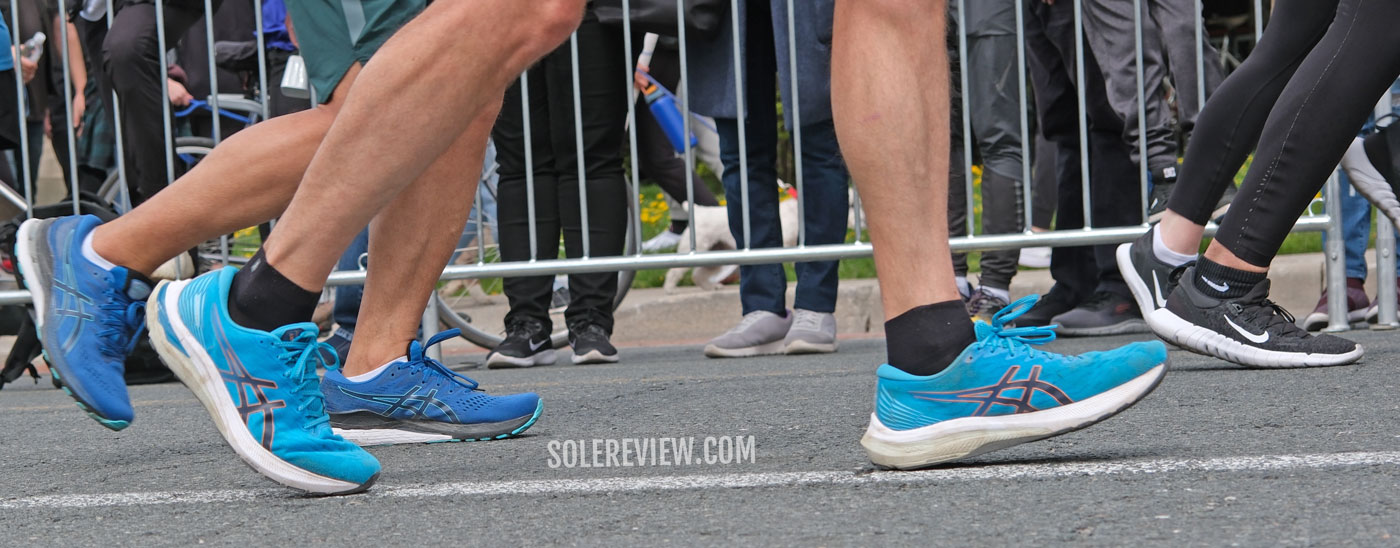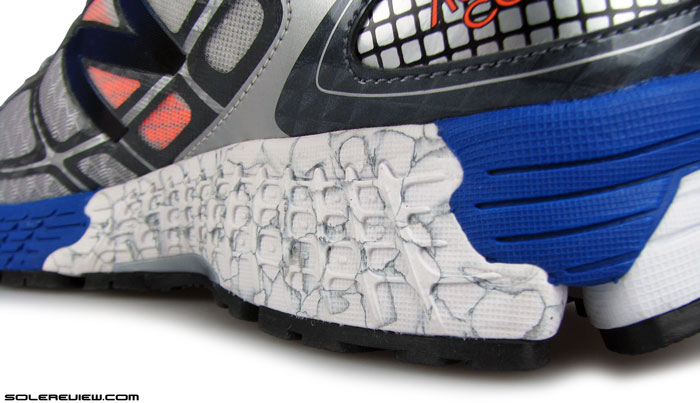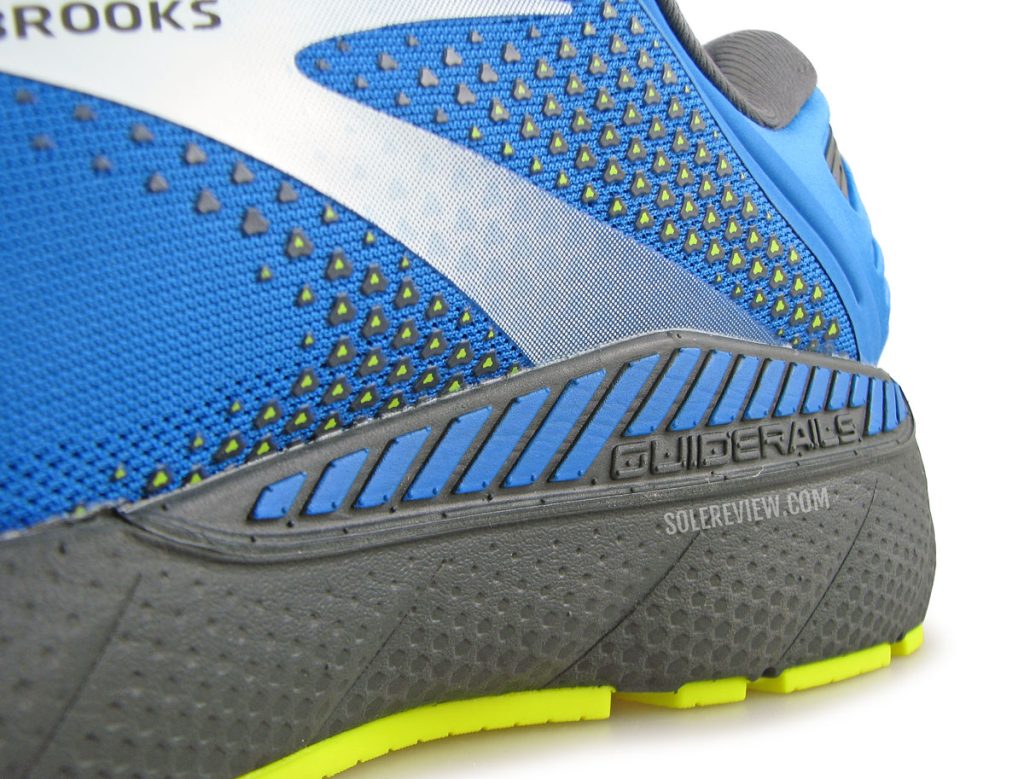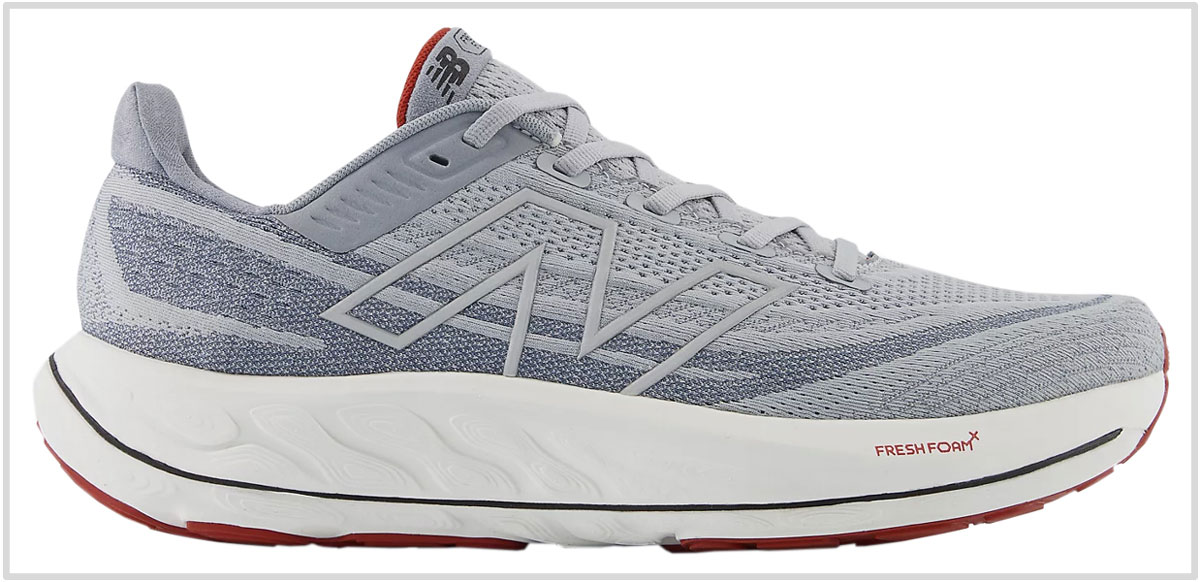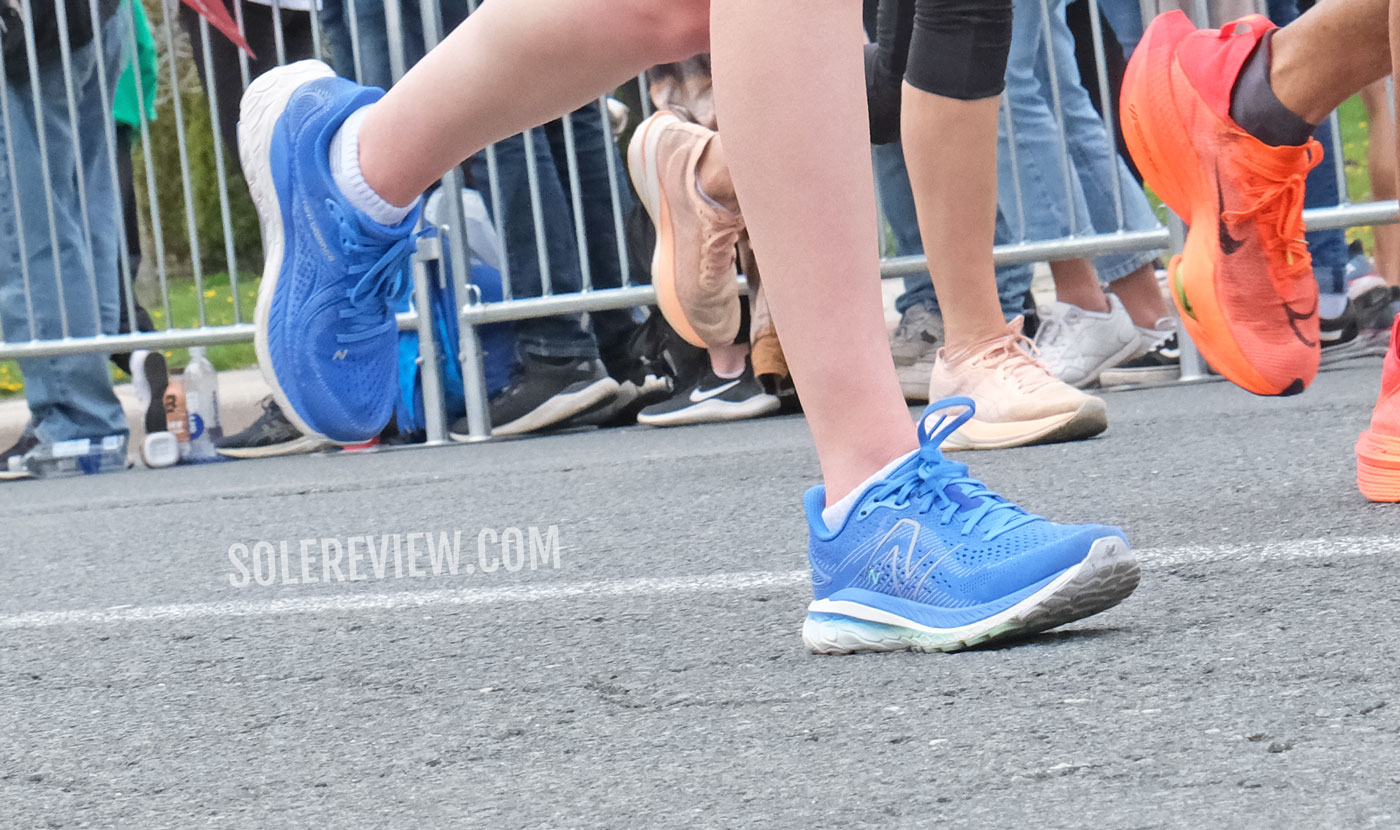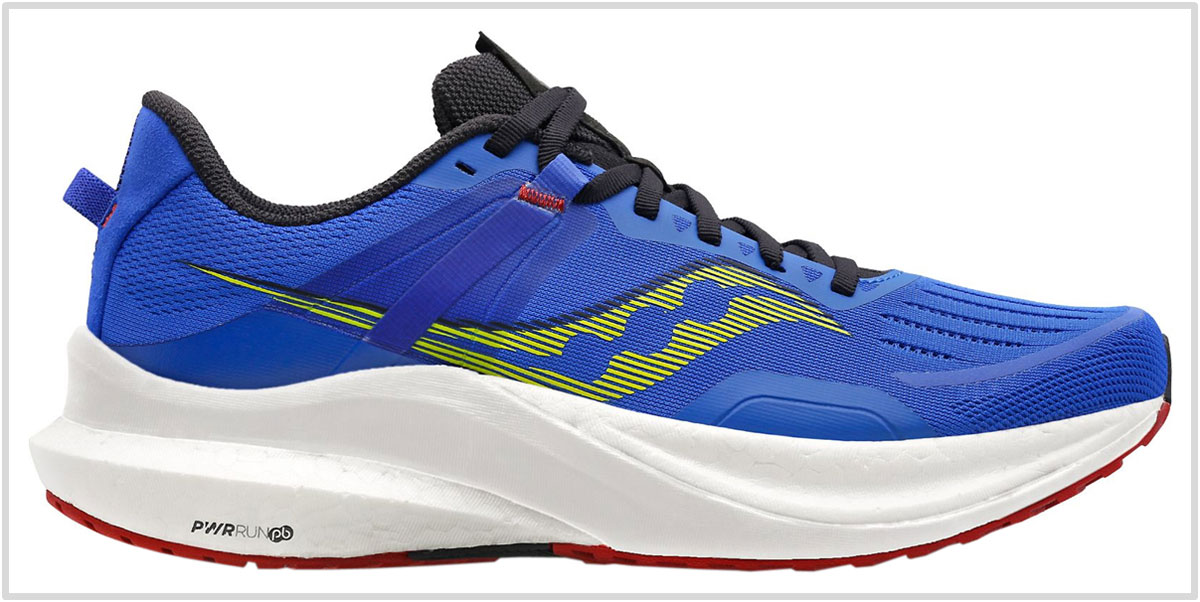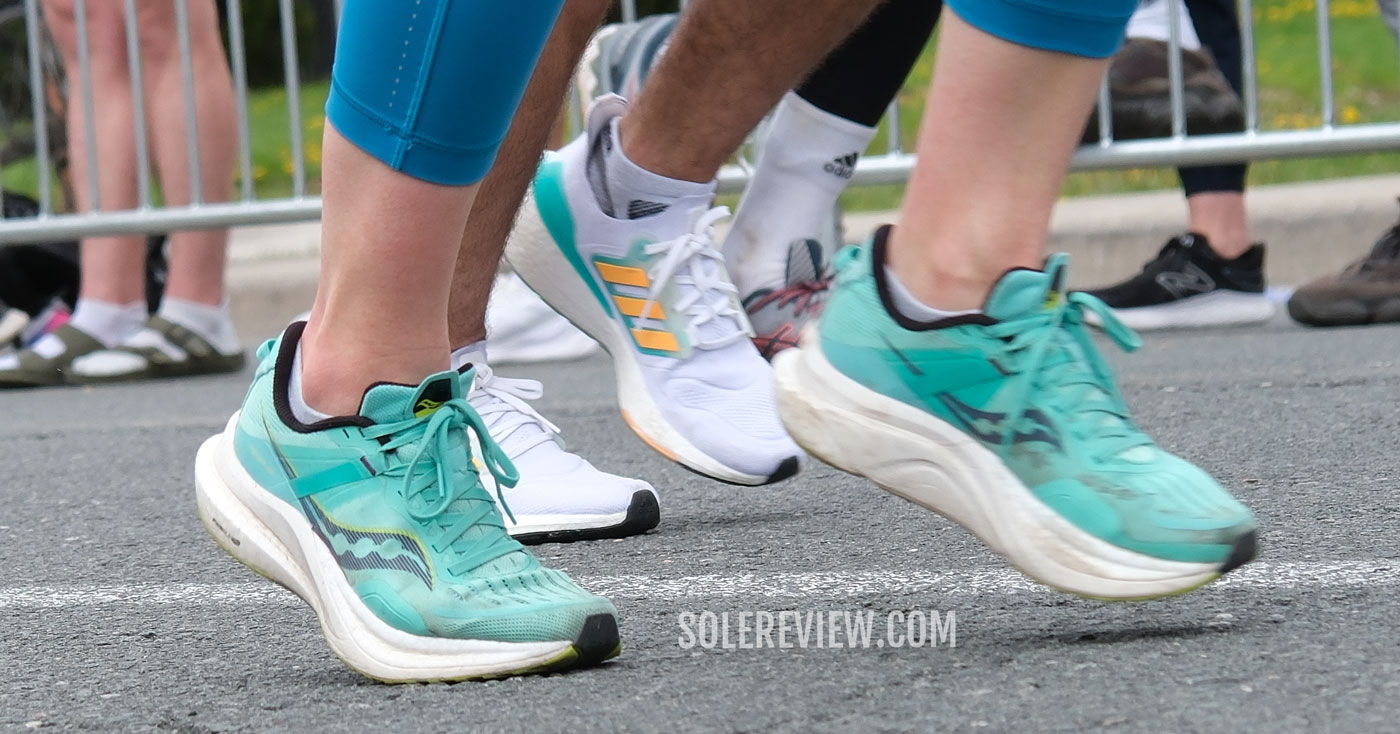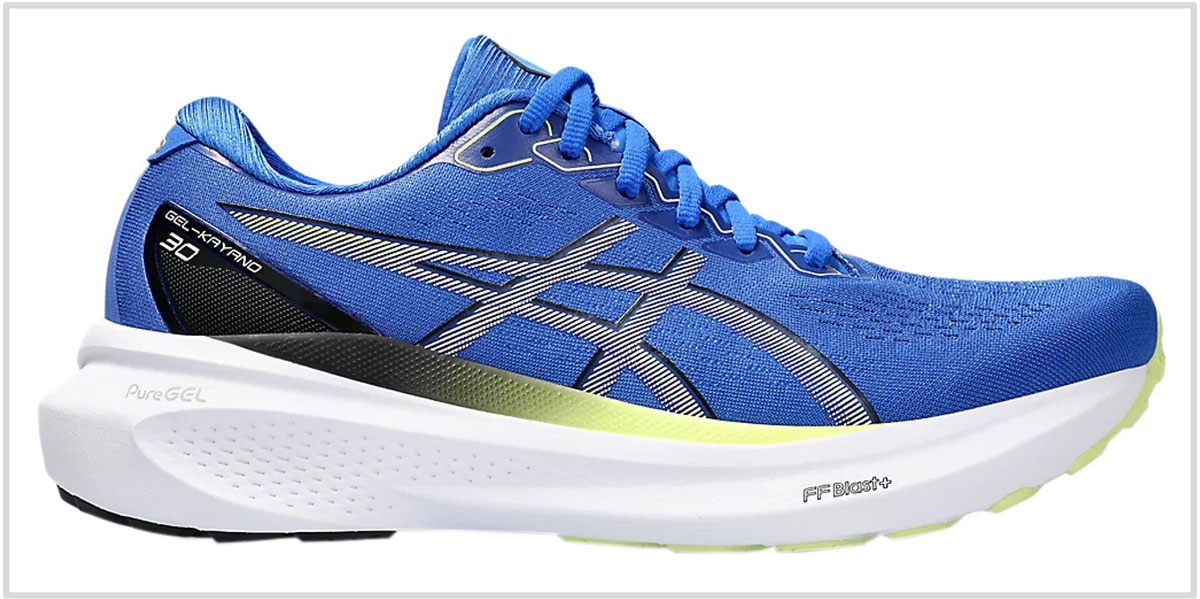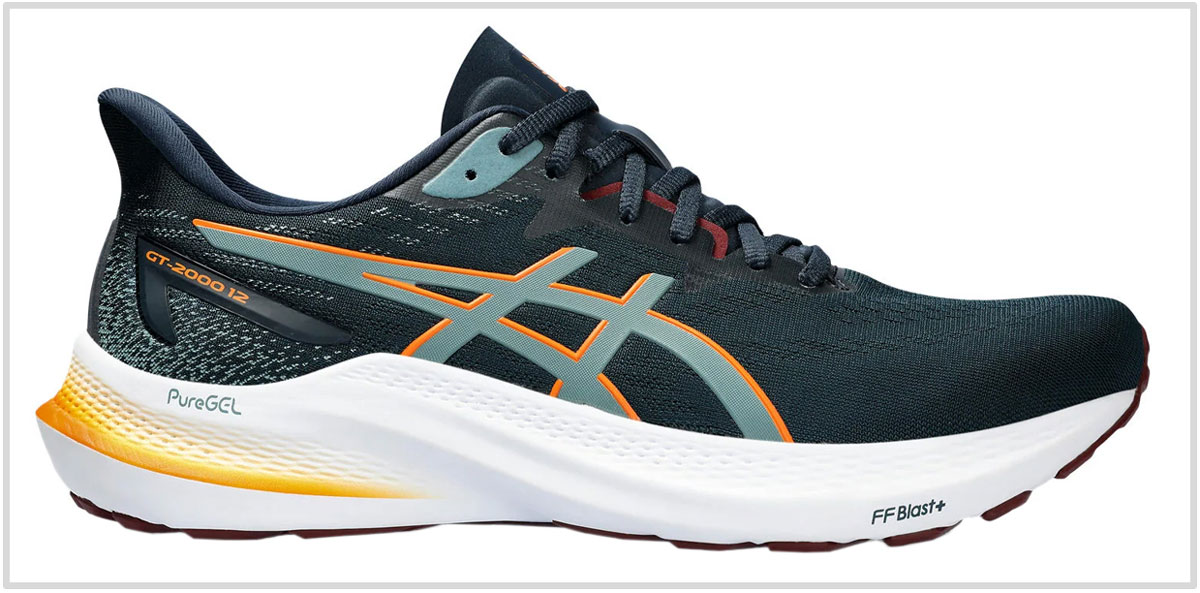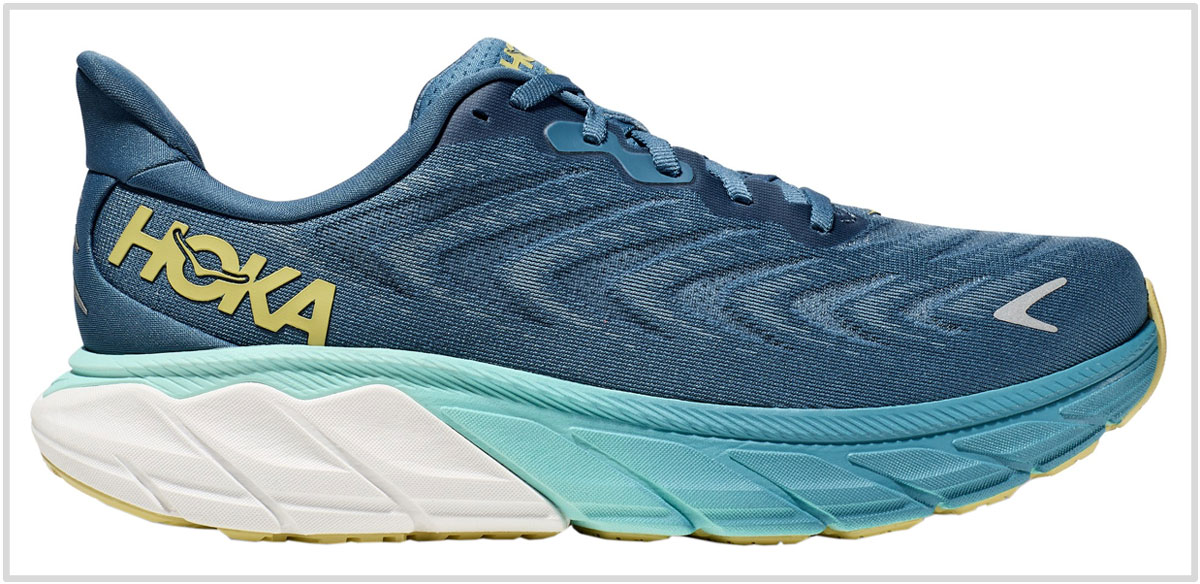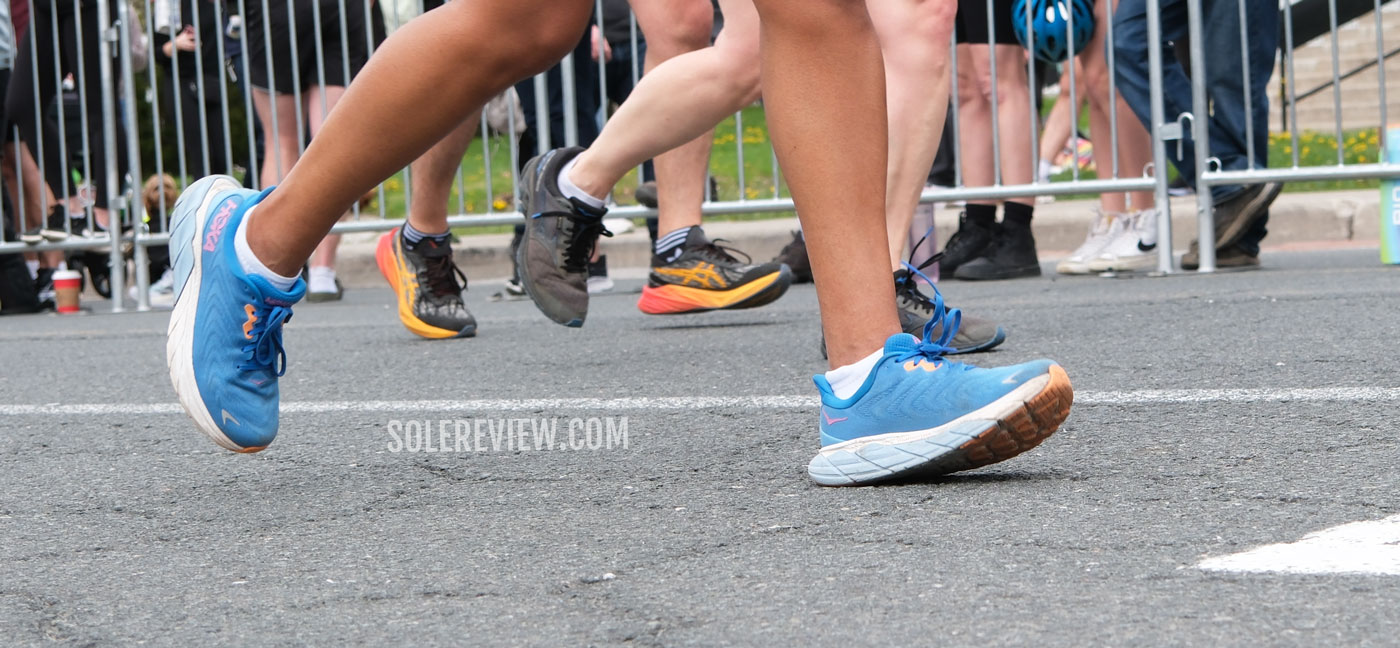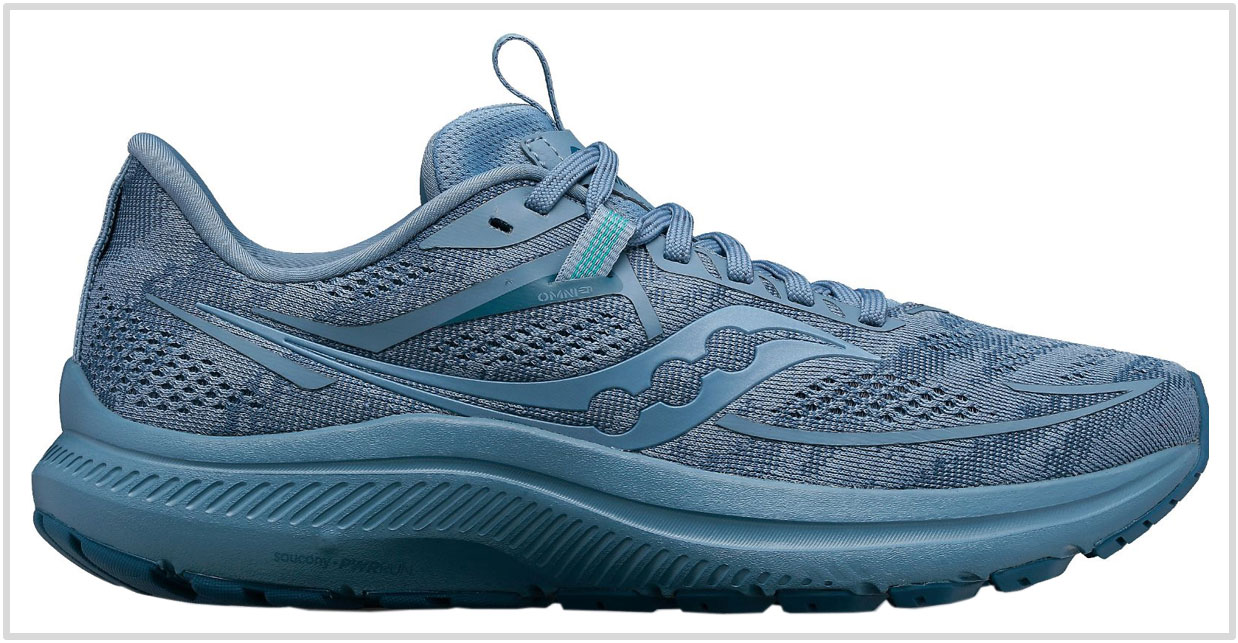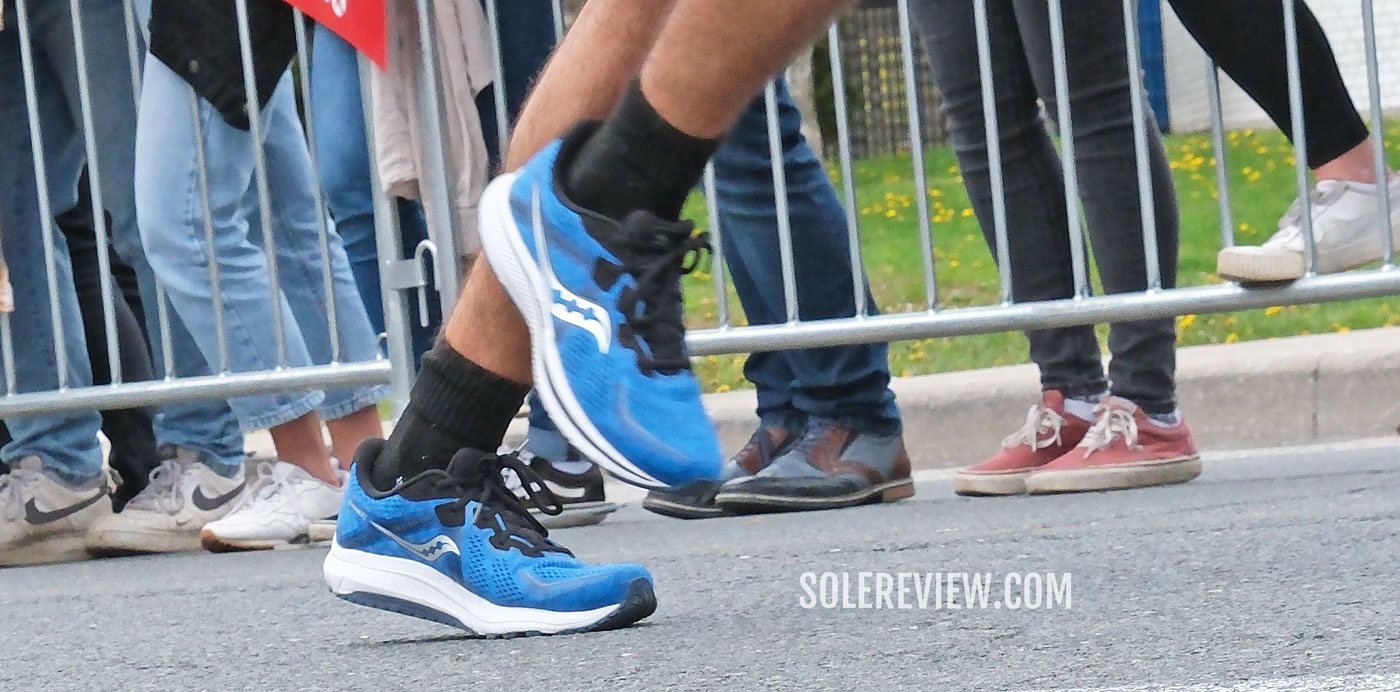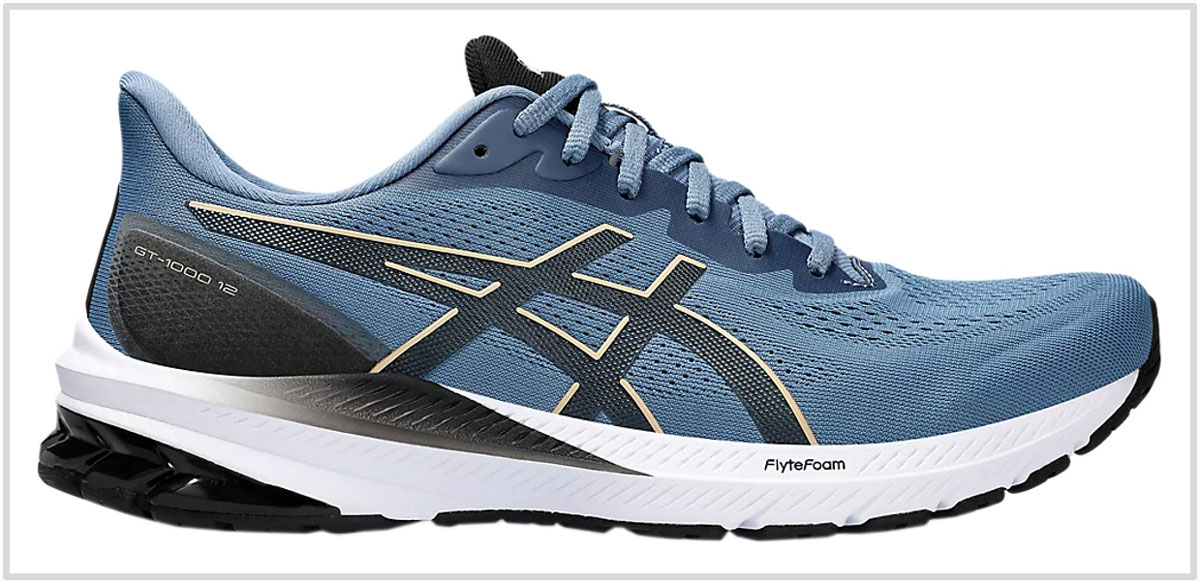This article has been updated with current models for November 2023. The Asics GT-2000 11, Asics Kayano 29, and New Balance Vongo V5 have been replaced with their updated versions. Except for the narrower ‘B’ width, the women’s models are almost identical to men’s. The Asics Kayano 30 and GT-2000 12 have different stack heights for men and women.
In this product guide:
- 1. Factors to consider
- 2. Cushioned trainer with gait correction: New Balance Vongo V6
- 3. Daily trainer with a medial post: New Balance 860V13
- 4. Long-distance trainer with medial support: Saucony Tempus
- 5. Supportive everyday trainer: Asics Kayano 30
- 6. Supportive everyday trainer: Asics GT-2000 12
- 7. Supportive distance trainer: Hoka Arahi 6
- 8. Max stability trainer: Saucony Omni 21
- 9. Affordable trainer with a medial post: Asics GT-1000 12
Let us guess. You’re here because you probably had a ‘gait analysis’ done at a shoe store and were advised to wear running shoes that ‘correct’ your pronation.
Or you read something about overpronation on the internet, so you landed on this page to do further research before finally deciding which shoe to buy.
But let’s make it clear upfront – the so-called stability running shoes will not ‘cure’ or even correct your overpronation. Everyone pronates; this inward-rolling movement is a naturally occurring component of the gait cycle. The only difference is that a certain population of runners roll in a lot more than others.
To counter the exaggerated movement, the ‘medial post’ was invented a few decades ago. This is a firmer wedge of foam on the inner midsole. The underlying theory was that the harder inner midsole prevents the foot from rolling excessively inwards.
It sounded great on paper and made sense in the 70s and 80s. Back then, running shoes had blown EVA foam midsoles that compacted quickly and lost their structure within a few months. We discussed this topic in detail in one of our 2015 shoe reviews.
In short, modern-day stability running shoes with a medial post are redundant. Perhaps vintage stability shoes were partially effective, but then those were ugly-looking beasts with oversized medial posts. Now that’s a medial post.
Midsole foams have come of age, so even neutral shoes are supportive enough.
To nobody’s surprise, recent traditional stability shoe updates have evolved into supportive neutrals. The Brooks Adrenaline GTS 23 and Nike Structure 25 are good examples of running shoes that have adopted a ‘supportive neutral’ midsole design. Even the Asics Kayano 30 and GT-2000 12 have switched sides.
So if traditional overpronation-control shoes are a relic of the past, then why does this buyer’s guide exist?
There are two reasons. The first is to tell you that you do not need an expensive ‘pronation control’ running shoe.
The other reason is that a lot of runners want the feeling of a cushioning bias, the same way some individuals prefer insoles with a sense of under-arch support.
Like any other running shoe, wearing a medially posted model (or equivalent) is a personal choice. To that end, we’ve put together a list of stability shoes with a mildly prescriptive ride character.
One good thing about most shoes on this guide is that their stability features aren’t intrusive. So even runners who otherwise run in ‘neutral’ shoes can buy them without any worry.
1) Cushioned trainer with gait correction: New Balance Fresh Foam Vongo V6
The Fresh Foam Vongo has always been the odd one in the stability running shoe ecosystem. Except for the Vongo V5, none of the Vongo models had a medial post – which is the firmer wedge of foam that makes the inner midsole (more) supportive.
So it’s not surprising to see the Vongo V6 pull another trick out of the hat. Except that the new feature is impossible to see from the inside; what sets the Vongo apart from its peers is a plate that is sandwiched between the two midsole layers.
When viewed from the top (and longitudinally), this plate is solid on the inner half and perforated on the other half. This means that the outer plate is easier to flex when loaded, whereas the inner midsole ends up more resistant. Simply put, the outer midsole is softer than the inner half.
This is an interesting – and novel – replacement for a medial post. Whether runners will truly benefit from this is debatable, but the Vongo V6 gets the sensory aspect down pat.
The snug upper does its part in securing the foot, and there are optional widths as well – wide and extra-wide.
2) Daily trainer with a medial post: New Balance Fresh Foam 860V13
New Balance hasn’t given up on medial posts – not just yet. Sure, the firmer foam wedge is nowhere as large as it used to be, but it’s there nonetheless.
The good thing is that while the inner midsole is more supportive than the outer side, there’s no cushioning bias. In other words, the 860V13 is equally supportive on both sides.
The 860V13 has a new feature that the 860V12 did not have. The midsole has raised sidewalls that hug the foot on either side. If that sounds familiar, Brooks uses a similar design named ‘Guiderails’.
Like the 880V12, the 860 doesn’t have an overly soft ride. The Fresh Foam midsole is tinged with firmness for better stability.
The soft and true-to-size upper is available in three optional widths.
3) Long-distance trainer with medial support: Saucony Tempus
The Saucony Tempus may not have a medial post, but it has the next best thing – an EVA frame that adds a higher level of medial (inner) support.
In our opinion, the frame does a far better job at providing medial support than Guiderails (Brooks) or traditional foam wedges. The Tempus also achieves this without making one side of the midsole firmer than the other.
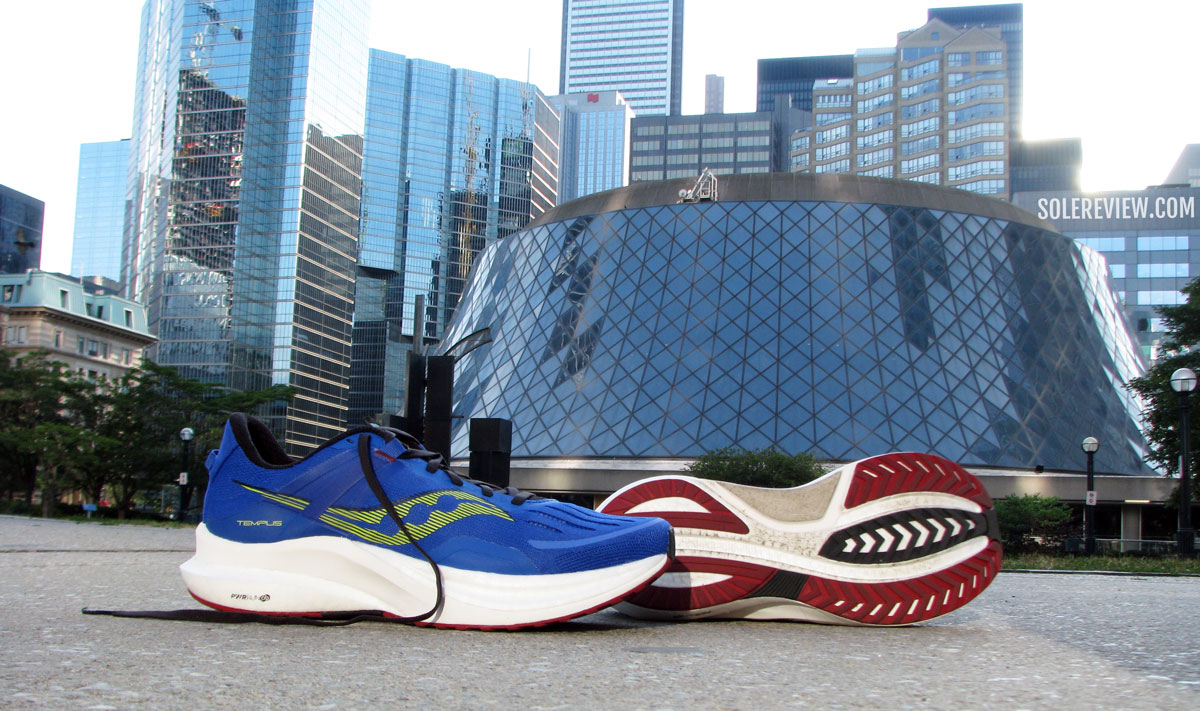
The Saucony behaves like a neutral trainer, but with the added benefit of under-arch support. The EVA frame isn’t the only trick up the Tempus’s sleeve.
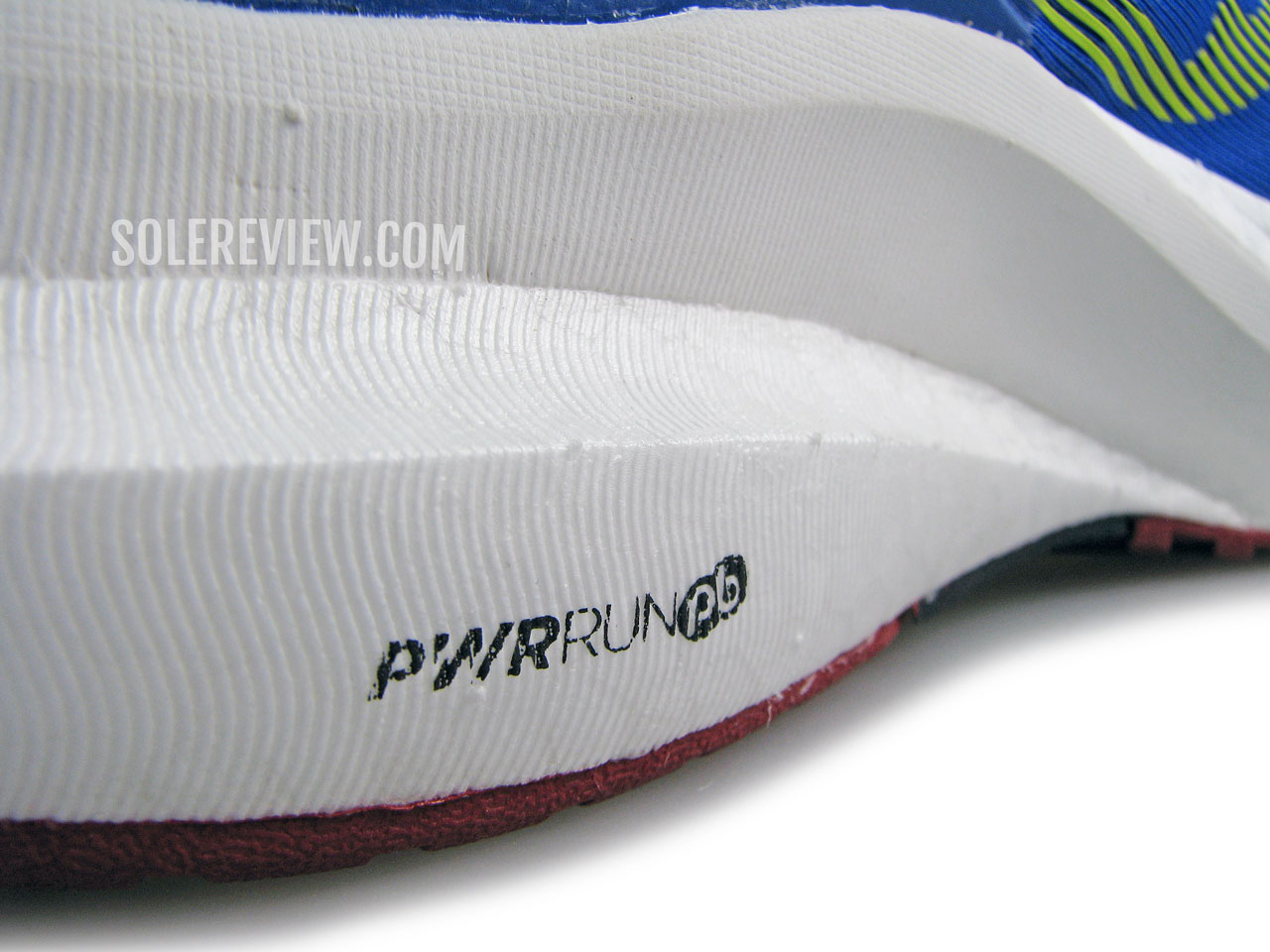
The Tempus combines an EVA frame with a softer Pwrrun PB core – the same material that’s used on the Endorphin Speed and Pro.
The main midsole is made of Pwrrun PB – the same bouncy foam that makes the Endorphin Speed and Pro so comfortable and engaging. Our comprehensive review dives deep into this unique stability trainer.
This unique blend of support and ride comfort makes the Tempus suitable for most use cases and foot-strike orientations. There’s ample cushioning for longer distances, whereas the responsive PEBA midsole increases the versatility.
The lightweight upper is excellent too. It’s ultra-breathable, secure, and comfortable on the inside.
Also see: The Hoka Mach X – a brand-new running shoe that’s based on a similar form factor.
4) Cushioned trainer with a supportive ride: Asics Kayano 30
Over the last few years, Asics had been testing the Kayano Lite and Nimbus Lite in a not-so-stealthy fashion.
Now it’s evident that the Kayano Lite and Nimbus Lite were both precursors to the Kayano 30 and Nimbus 25. Both the ‘Lite’ models were stripped-down variants of the namesake shoes, with no visible Gel, plastic shanks, or medial posts.
So while the Kayano Lite has been discontinued, it’s been replaced with the Kayano 30 – a cushioned, albeit supportive, running shoe without a medial post or visible Gel.
That makes it a very different shoe than the Kayano 29; the latter was a traditional stability shoe whereas the Kayano 30 is a neutral shoe with a supportive ride. By ‘neutral’, we refer to its balanced cushioning that does not (overly) favor the outer side. It also feels more consistent in its cushioning delivery than the 29 because of its single-density Flytefoam midsole.
The Kayano 30 is softer with a higher level of ride comfort, so it’s a better shoe for long runs than the last model. At 10.7 ounces, the Kayano 30 isn’t exactly lightweight, so it’s not versatile enough for intervals or tempo runs.
5) Supportive everyday trainer: Asics GT-2000 12
The Asics GT-2000 is often thought of as the ‘light’ version of the more expensive Kayano.
When compared to the Kayano 30, the GT-2000 12 is more than an ounce lighter, has a 2 mm lower heel drop, and is cheaper by $20.
In short, the GT-2000 12 is a lighter and more versatile version of the pricier Kayano. The lower weight also makes the shoe feel faster, and yet the cushioning is comfortable enough for runs of varying mileage.
Unlike the Kayano, the upper keeps the trims and frills to a minimum. The engineered mesh shell fits comfortably and true to size, whereas the high-density printing details on the midfoot and heel add structural support and aesthetic appeal.
And considering how both the shoes are joined at the hip, the GT-2000 12 also adopts the ‘supportive neutral’ midsole design that leaves behind the medial post.
6) Supportive distance trainer: Hoka Arahi 6
The Hoka Arahi 6 doesn’t have a medial post, but has a firmer EVA frame that provides a higher level of support on the inner midsole.
The firmer EVA frame wraps around the rear midsole and extends to the inner forefoot. This design is similar to the Skechers GoRun Forza from a few years ago. It worked back then, and it works just as well today.
This unique design prevents the midsole from collapsing during high angles of pronation.
The softer foam core makes the Arahi 6 a comfortable shoe for everyday runs as well as half-marathon distances. The supportive outsole has a wide footprint with strategically placed rubber lugs, and that’s good for traction and efficient turnovers.
The upper is true to size, but fits narrow in true Hoka fashion. Other than those quirks, the Arahi’s interiors are smooth and plush in just the right places.
7) Max stability trainer: Saucony Omni 21
Of all the shoes on this guide, the Omni 21 happens to be the most traditional motion-control shoe.
While the upper and midsole design is visually aligned with the rest of the Saucony catalog, it has none of the new-age foams like Pwrrun+ (e-TPU) or Pwrrun PB (PEBA). Like the Ride 15 and Guide 15, the Omni uses a standard EVA foam midsole.
The Omni 21 harkens back to the 90s. The sizeable medial post is noticeable, and that’s something that can be felt under the foot as well.
The Pwrrun midsole is made of an EVA-blended foam, so its firm ride reminds us of the older Saucony designs. While it is very stable, the Omni 21 has a motion control undertone due to the dual-density setup.
The Omni 21 uses the same midsole as the Omni 20, so both shoes are practically the same.
There’s nothing special happening on the upper either; just some good old-fashioned engineered mesh cobbled together with welded overlays and padded lining. This ‘safe’ approach ensures a predictably comfortable and secure fit.
If the idea of a running shoe with a medial post sounds appealing, then we’re happy to report that the Omni 21 gets the old-fashioned stability running shoe formula right.
8) Affordable trainer with medial post: Asics GT-1000 12
The GT-1000 12 has a mild motion-control character. There is a firmer medial post, but it’s tiny and does not affect the overall ride dynamics.
Like the GT-2000, Asics no longer mentions ‘Duomax’ (its term for a medial post) in the GT-1000 12’s product literature. However, there is a firmer section of foam on the inner midsole.
There is a slight cushioning bias that favors the outer midsole, but that’s precisely why this model features on this guide. The midsole geometry gets you a firmer inner midsole and softer outer sidewall. That happens because the outer side has a visible – and softer – Gel window.
If you’re unfamiliar with Asics’s stability shoe lineup, know that the GT-1000 is part of the unofficial Kayano/GT-2000/GT-1000 group. The Kayano 29 (now 30) is the premium stability trainer (and the most expensive), followed by the GT-2000 11 and lastly the 1000.
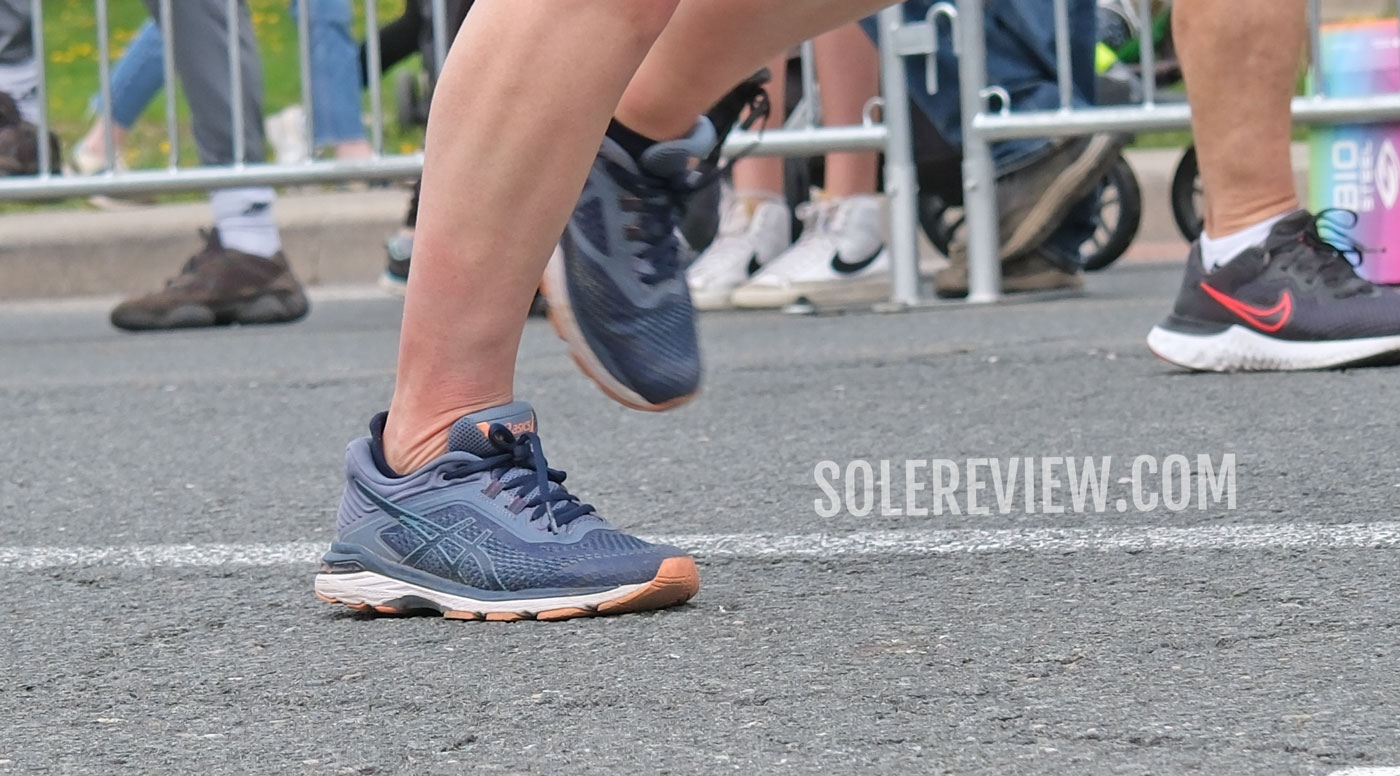
The Asics GT-1000 11(pictured) and Asics GT 1000 12 have an identical midsole, so there’s no change in the ride behavior.
There is almost no difference between the Asics GT-1000 11 and GT-1000 12 as both models are based on the same midsole.
Interestingly, the GT-1000 12’s upper has marginally more in the front because of the redesigned heel collar. The heel padding isn’t as aggressive as the GT-1000 11, so it allows the foot to sit a few millimeters away from the front.
Do you own any of these shoes? Improve this review by sharing your insights – submit a review here.

